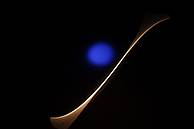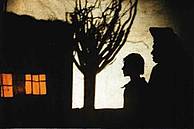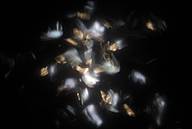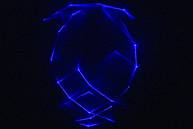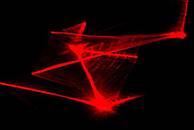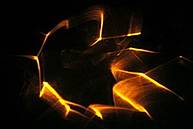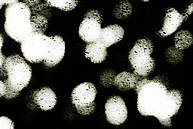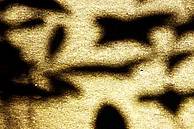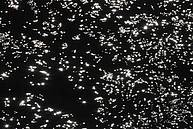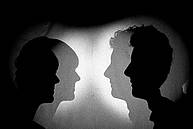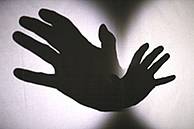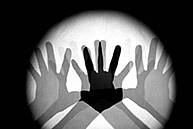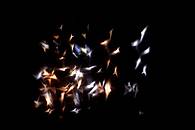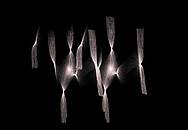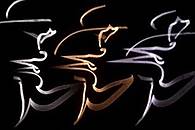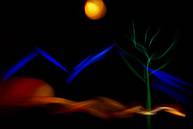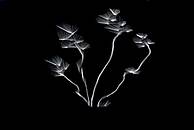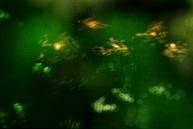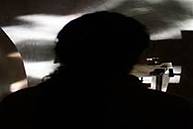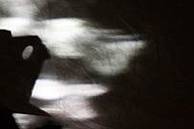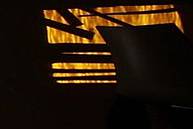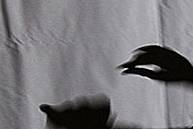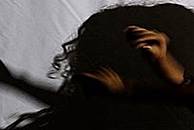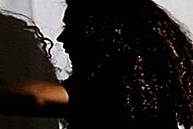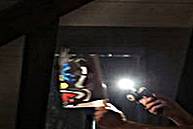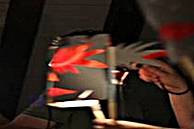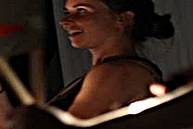Advanced workshop – 5 days
Additional techniques such as working with graphic images, three-dimensional shadow images and partial illumination will expand our options. This will give you deep insights into the nature of light as a design tool. Additionally, you will gain experience with questions of narrative form and dramatic composition.
The workshop is held annually in the fascinating world heritage city of Bamberg, Germany, during the second week of August. A basic course on shadow theatre or other experience with the use of light is recommended but not obligatory.
“Shaping with light”
Part I: Light as a tool | 3 days
The variety of light
- Contemporary illuminants and their various uses
- The handling and manipulation of light
technical aspects, manageability, various accessories - Principal and auxiliary tools
halogen lights, LEDs, OHP’s, torches and other illuminants - Combinations of light
how to diversify the images
Extraordinary light
- Coloured shadows – the RGB system
installation and experiments - 3 – dimensional shadows
requirements, technical installation and play - Laser – a subject of its own
Basics, handling, security features,
colours and their combination,
reflexion, refraction, diffusion and shadows
Light and composition
- Light and its positioning
Basic rules, perspectives, using light like a camera - Figures and objects
two/three-dimensional objects, self-luminous figures,
illuminated interior spaces, naturalism and abstraction,
composition, working with templates/formats - Structure / colour / background
structure as a medium of colour design, basic colour temperature,
adding shades of colour, structured light, abstract spaces - Functional light
how to accentuate scenes - Light and its effects / atmosphere
the psychological effects of light
Light and body
- Light and person
classic human shadows, coloured, symmetrically - Licht and body
physical shadow theatre, landscapes of the body,
combinations with figures - Light and hands
rhythmical works, sizes, hand shadows abstract and naturalistic - Abstract figures
doubling, graphical works
Narrativ possibilities with light
- The stage in modern shadow theatre
basic construction, parameters, equipment/installation, objects/figures - Archaic storytelling
the basic idea, the story line with images, sound and movement of light,
voice, narrative style, narrative perspective, timing, style of play - Narrative attitudes of light
static light, unfettered light, controlled movement of light, pan shot,
360° pan shot, parallel movement, zooming in and out - Abstract storytelling
combinations, various acts
Painting with light
- Where it comes from
Camera obscura, long time exposure, software lpl - Installation and stage setting
Laptop, webcam, beamer, screens, connections and adjustment,
different modulations and lightsources - Painting with light
Tools and techniques
Part II: From first idea to production | 2 days
Let’s get down to the details
- Stage
What is it like, what is it made of? Where is the screen, what is it like, what is it made of? What about the logistics? - Light
How is it moved? Where is it placed? How can it be deployed efficiently and effectively? - Pictures
Which ones to choose? Which kind of material? Which kind of presentation? Naturalistic or abstract? What about the temporal sequence? - Figures
Which kind of material? How do the figures move? How are they held?
What can they do, what do they have to be able to do? - Language
How is the story told? Are there any dialogues? Should the figures be recognised by their voices? Any use of onomatopoeia? Any use of microphones?
- Music
Suitable techniques: MP3 player? Voice recorder? PC feed? Live music? - Player
Who is the player? Does he/she know more than the figures? What is the inner attitude of the player?
Everything falls into place
- How to create the scenes
Interaction between light and figures, how to combine the elements of light, movement, music and language,
creating a preliminary script. - Dramatic composition
Are the transitions working? How is the rhythm? Is there a storyboard? How to work with video takes? - Small „Islands“
Are there any special features? On what kind of levels?
How to incorporate small miracles or dangerous risks?
George Hanover, Ireland:
This course met with and exceeded my expectations. I was enthused not only by what I was learning but also Norbert’s own passion, which is highly infectious. At times I felt like a child playing freely with reflection – my new found friend – at other times overwhelmed by the vast possibilities of this art form. Anything you want to know regarding light and shadow will be answered in this course. I highly recommend that you allow yourself an amount of playtime when returning from this course, your imagination will be running wild and your head bursting full of ideas.
